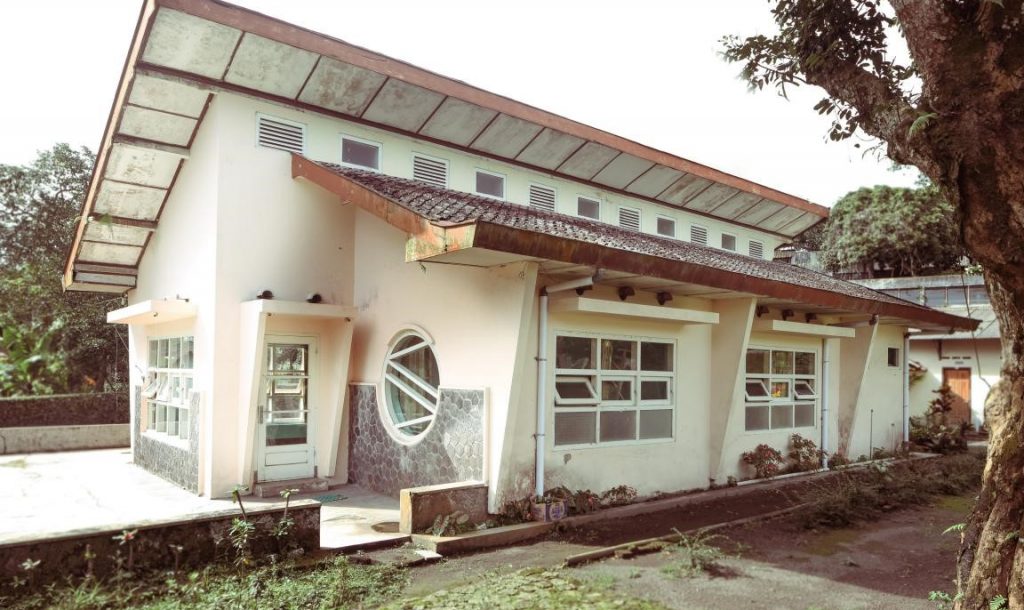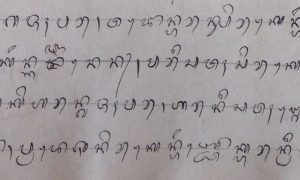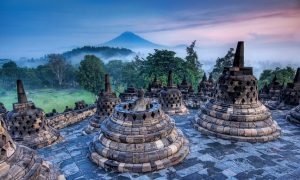This week, PoP is pleased to present a guest post by Jakarta-based photographer Tariq Khalil, whose work was recently featured in The Sydney Morning Herald. His new book, Retronesia: The Years of Building Dangerously (Equinox Publishing, 2017) is now available on Amazon. This project is a visual account of a fascinating period of Indonesian architecture in the 1950s-60s, called jengki: “Indonesia’s version of mid-century modernism, characterised by unusual shapes, such as pentagons, asymmetrical roofs, cut-out doors and windows, tilted columns or walls and air vents – crucial for the tropics – in playful circles, trapeziums or diamonds” (Topsfield, 2018). In this post, Khalil takes us through three vignettes of buildings he photographed for the project.

The retro look with recycled mid-century modern furniture, boutique in Bali. Source: Tariq Khalil.
It seems that all new cafés in Indonesia are serving up a new blend, rich with the aroma of the 1950s. From objects such as furniture – flaunting flashy angles, perched on pin-pointy legs – to boutique hotels and even Pertamina’s petrol stations, revivalist facades and tilted canopies have brought a fresh, but “retro”, look to town.
Indonesian artists and designers have begun to stray into a forgotten cultural frontier: the aesthetics of the ‘new Indonesia’ seemingly free of colonial influence. This Jengki (Yankee) style is enjoying a revival, but the 1950s era remains obscure to many.
My book Retronesia is a travel guide to the darker edges of living memory, where nenek and kakek reveal life behind the standard heroic narratives taught by scholars of Indonesian architecture.
Despite the Indonesianisation push and pull after independence, Dutch Indies revival styles came back in vogue, tailored to new ambitions. After the mass expulsion of the Dutch community during 1957-58, this neo-colonial style of architecture evolved, but remained influential to the look-book of elite properties late into the 1960s.
For almost a decade, I have travelled off-road, holding off cultural amnesia and following winding trails to track down a near-invisible heritage of work, rest and play. Mountain villas, elite townhouses, churches and once-prominent public buildings reveal an alternative façade to the new Indonesia. These little-known treasures of modernist heritage have now been published in my new book Retronesia: The Years of Building Dangerously.
Volcanic Chill – Mountain Resorts
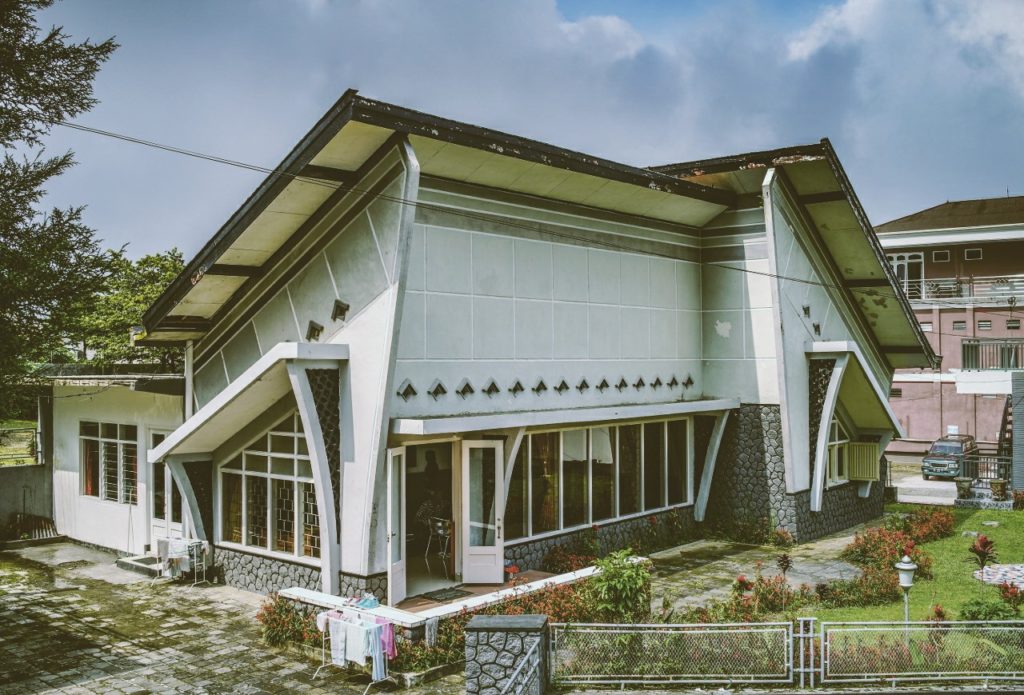
Lakeside villa, Sarangan Lake, East Java. Source: Tariq Khalil.
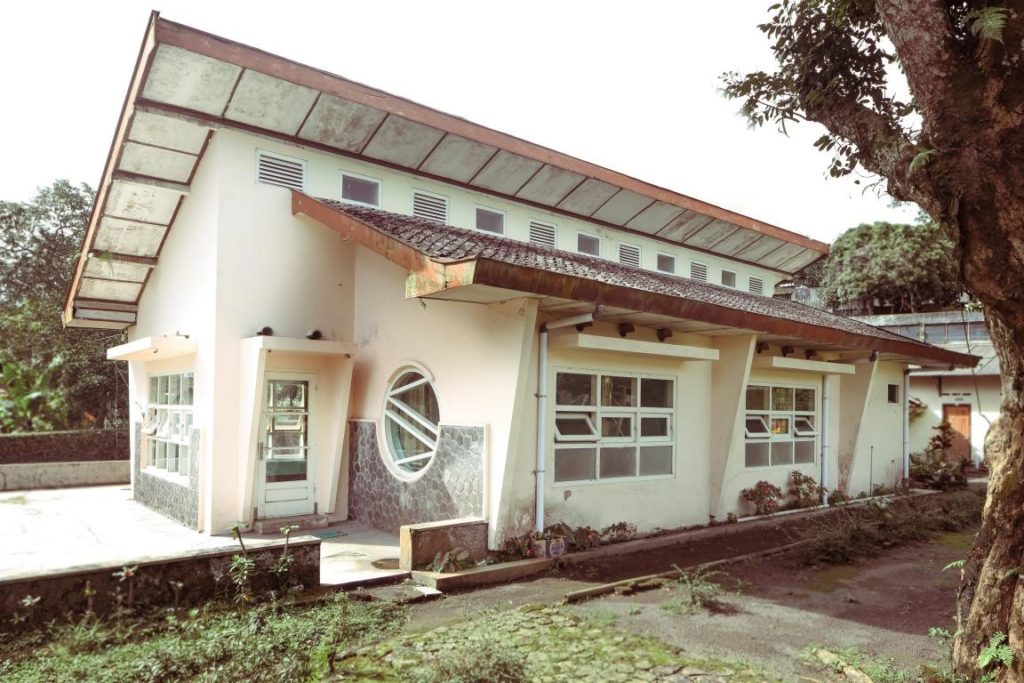
Former private hillside villa now for rent, Kaliurang, Yogyakarta. Source: Tariq Khalil.
On the lower slopes of Java’s slumbering volcanoes are countless guesthouses that once represented a one-time ‘it’ destination. Puncak, Lembang, Kaliurang, all the way east to Selecta in Malang were once luxury getaways – the Dutch equivalent of Indian hill stations.
After the fog of revolutionary war had lifted, night-time curfews were imposed leaving country roads bandit domain. Oddly, Java’s colonial retreats were not shunned or torn down like confederate statues; rather they were revamped and polished for a new elite eager to check-in during the mid-1950s.
Swiss-trained architect Oei Tjong An transformed the resort between 1955-58. Palm Springs – complete with butterfly roofs, tilting beams, fancy trellises and rock work chimneys – made a guest appearance in the new Java.
Within a generation, tastes in luxurious leisure has travelled up the spiral of desire.
During long weekends and holidays – and provided nearby volcanoes remained dormant – the general public made long snaking trails of traffic uphill for gatherings, parties and for a more recent leisure interest: dressing up for the outdoors.

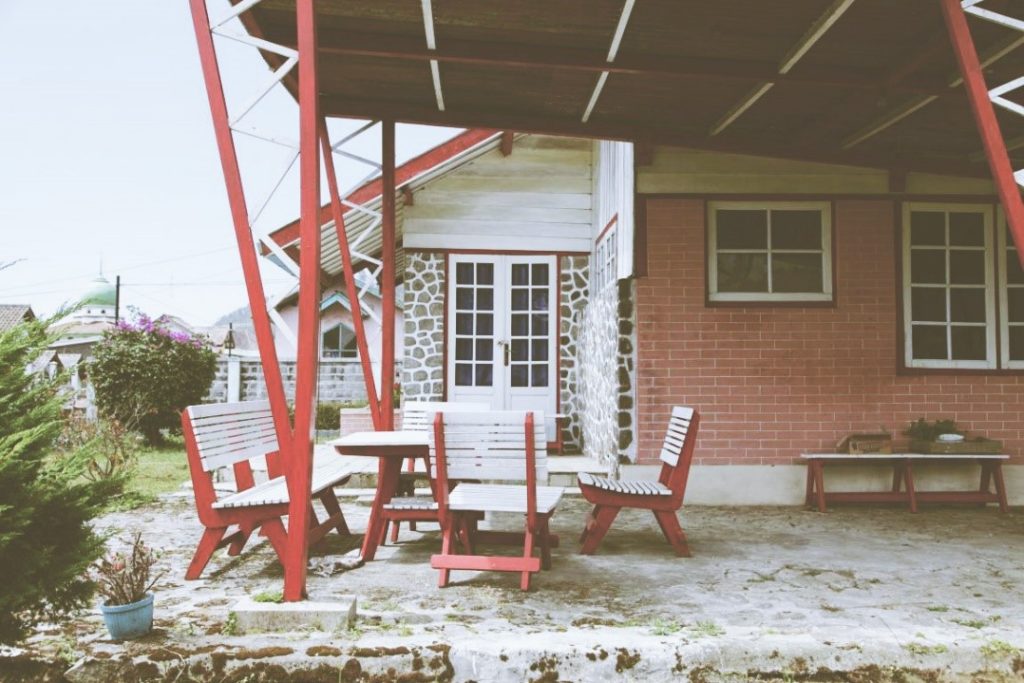
Interior and exterior details of once private hillside villas, Kopeng Resort, Central Java. Source: Tariq Khalil.
The Improbable Home – The Tebet Townhouse
As Senayan Stadium gets ready for the 18th Asian Games this year, one big contemporary hurdle is the problem of managing traffic. Back in the day, when the complex was built in 1962 for the 4th Asian Games, the challenge was instead the need to rehouse lots of people. Families were quickly moved and many were resettled in the new Jakarta suburb of Tebet.
Little more than swampland on the city’s southern and eastern edges, Tebet was known as tempat jin buang anak (literally, a dumping ground for genie’s children). It was an unlikely home for a first-generation diplomat, Pak Haluddin Lubis. Born to a humble Batak family in north Sumatra, Pak Haluddin had as a child dreamed of traveling westwards to study at Cairo’s Al-Alzhar University.
By the 1930s the young Haluddin got himself on board a ship taking him as far as British India, where he began his studies at the anti-colonial Deobandi Islamic school – a peer of Al-Alzhar. Amidst the chaos of 1947 he was evacuated from Delhi to Karachi in newly created West Pakistan, where he unintentionally embarked on diplomatic career with Indonesia’s fledgling Foreign Service.
Like most civil servants he drew a meagre salary. He sought honest ways to make extra income in between postings, choosing to resell valued foreign products like cameras, projectors and even cutlery. A car aficionado, he procured a new Fiat 1100 on his posting to Poland. Back in Jakarta, he resold it and used the proceeds to purchase the ready-built Tebet townhouse in 1965.
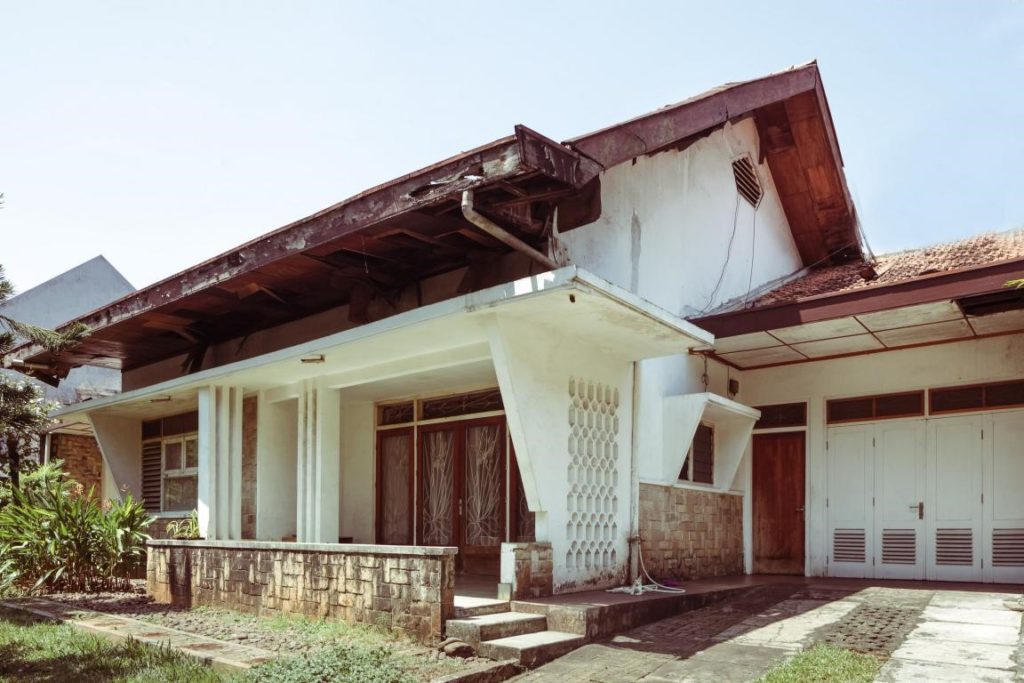
The Lubis Townhouse 1965, Tebet, south Jakarta. Source: Tariq Khalil.
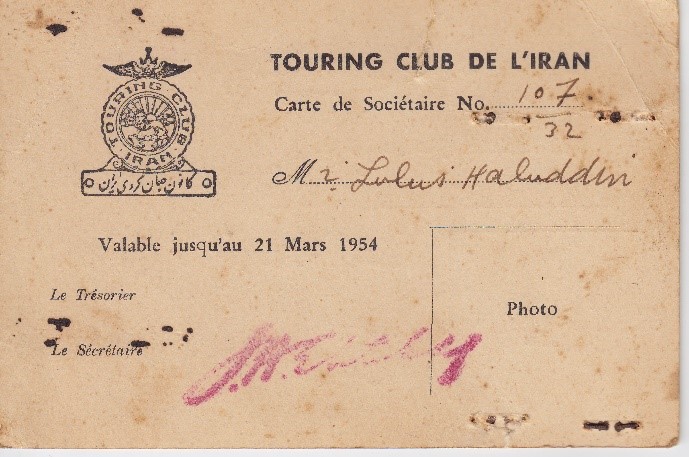
Lubis’ car club membership in Iran 1954. Source: Courtesy of Farida Lubis.
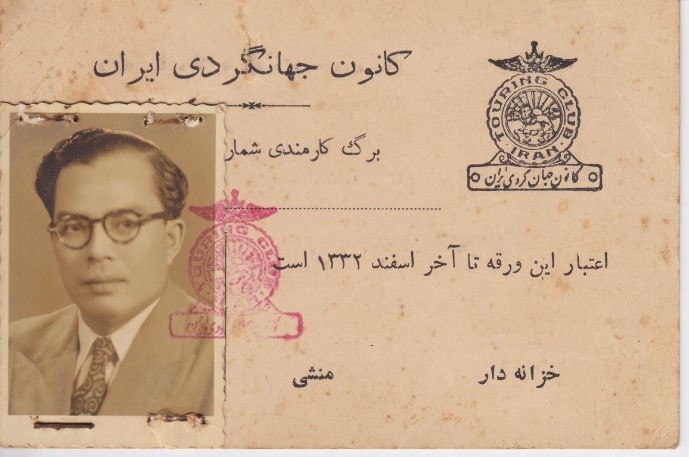
Last Orders – The Bumi Sangkuriang
The hotel and restaurant Balai Pertemuan Bumi Sangkuriang, located in Bandung’s exclusive hillside district of Ciumbuleuit, played a supporting role in the world’s first large-scale Afro-Asian conference of 1955 – the Bandung Conference. Indonesia hosted its first international conference to cement the non-aligned movement’s ideals and to hasten the global wave of decolonization.
Bandung, with its stylish hotels, cafes, and boutiques enjoyed by Europeans, was the obvious host city for Indonesia’s legendary conference. Until the 1940s, Bandung’s planters and colonial elite had enjoyed wine, women and song at the Societeit Concordia, a fine establishment in the heart of the city that only admitted Preangerplanters (Dutch planters) and Europeans. In 1954, President Sukarno requisitioned the spacious club’s premises and ordered them to move out to the hills.
Thinking they were here to stay, the club engaged the city’s leading Dutch architect Gmelig Meyling and his firm NV Ingenieurs Bureau Vrijburg to design a statement clubhouse high up in the hills of Ciumbuleuit – far removed in style and expression from their vacated neo-classical pleasure palace.
The club was a coda to Meyling’s creative decade in Indonesia, which ended in early 1957. His last project in Indonesia was a prelude to the mass expulsion and nationalisation of all Dutch assets. The renamed club and hotel is open to the paying public; Ciumbuleuit has become the premiere address in Bandung and Meyling’s former bureau trades as PT Sangkuriang. Over the decades, without a Sukarno figure, the non-aligned movement has attempted several comebacks.
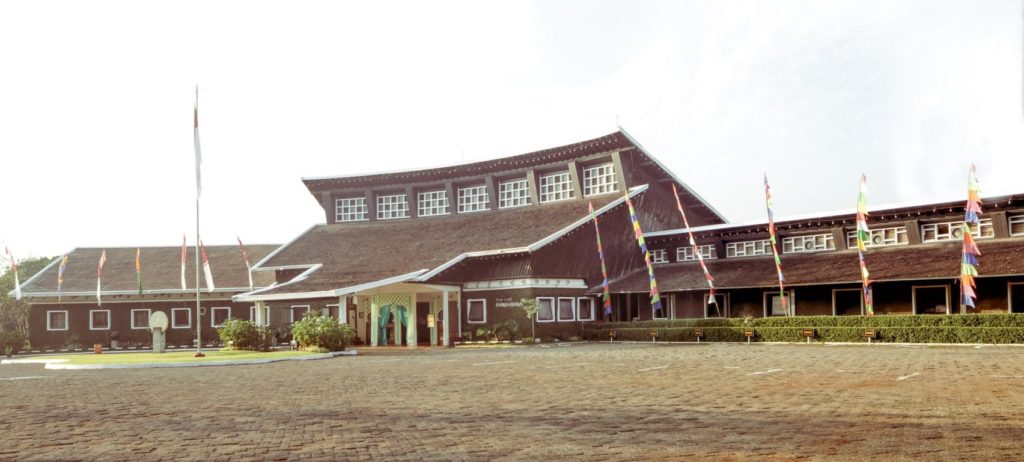
The Bumi Sangkuriang 1956, Bandung. Source: Tariq Khalil.
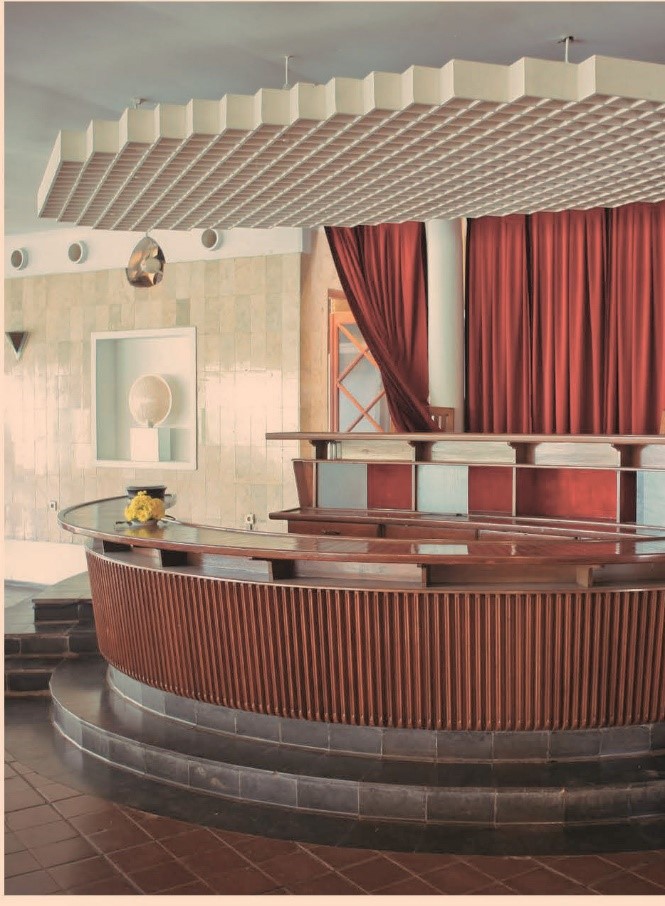
The dry ex Planters Bar, 1956 Bumi Sangkuriang Bandung. Source: Tariq Khalil.
See more of Retronesia on Facebook and Instagram. Tariq Khalil can be reached at sritariq@gmail.com.
 Facebook
Facebook  Twitter
Twitter  Soundcloud
Soundcloud  Youtube
Youtube  Rss
Rss 